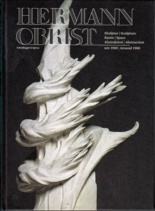Hermann Obrist (1863-1927) is regarded as one of the most influential founders and visionaries of the German ‘Jugendstil’ (art nouveau) movement. His oeuvre includes tapestries, ceramics, furniture designs, metal work but also sculptural works, such as monuments and fountains. Born in Switzerland and educated in Italy, Paris, Switzerland and Germany, Obrist settled in Munich, centre of the art nouveau movent in Germany, in 1895, where he made a strong career as a teacher, artist and pioneer of the reform of applied art.This book, accompanying exhibitions in Zurich and Munich, presents the entire range of Hermann Obrist’s work in a large number of colour and b/w illustrations. The essays investigate Obrist’s ideas and concepts, his inspiration for new abstract designs by natural forms and phenomenons, and on his monuments. The Museum Bellrive in Zurich owns almost all of Obrist’s known sculptural works, of which many remained unrealised or have been destroyed during World War II. All his plaster models and a unique photographic documentation of both realised works and models were saved by his widow and daughter and bequeathed to the museum in 1944. This collection is subject of a separate essay.
English / German text. Obrist was one of the initators of the JUGENDSTIL movement, the German variant of ART NOUVEAU.
